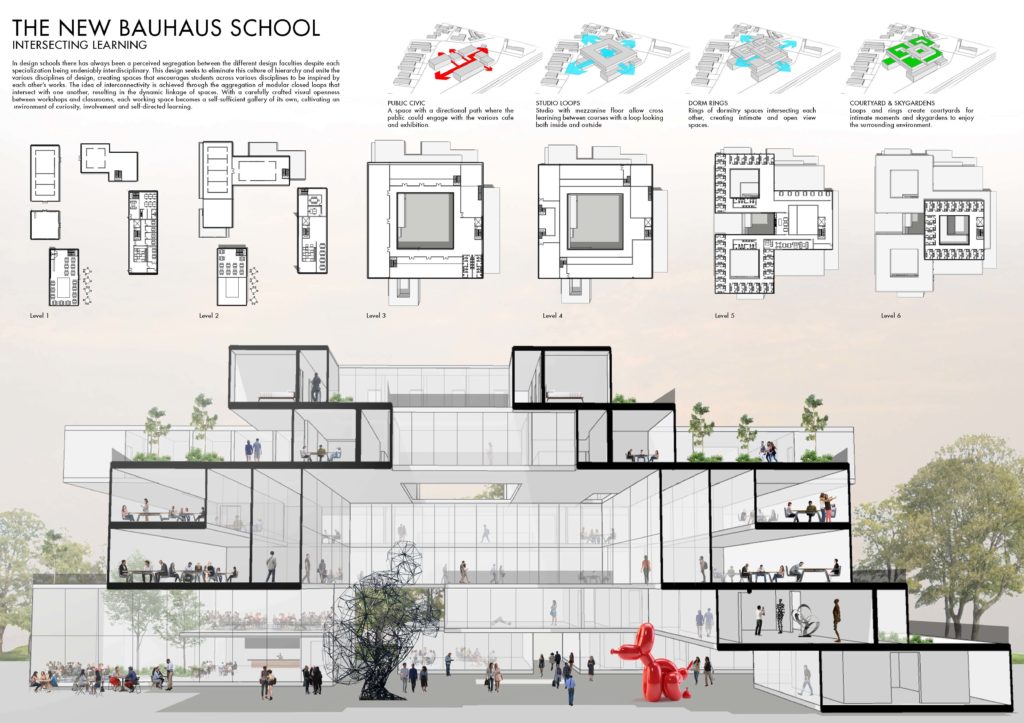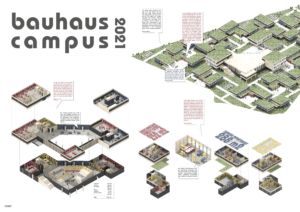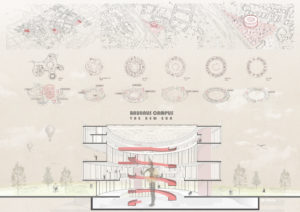Abstract
In design schools there has always been a perceived segregation between the different design faculties despite each specialization being undeniably interdisciplinary. This design seeks to eliminate this culture of hierarchy and unite the various disciplines of design, creating spaces that encourages students across various disciplines to be inspired by each other’s works. The idea of interconnectivity is achieved through the aggregation of modular closed loops that intersect with one another, resulting in the dynamic linkage of spaces. With a carefully crafted visual openness between workshops and classrooms, each working space becomes a self-sufficient gallery of its own, cultivating an environment of curiosity, involvement and self-directed learning.
Concept
Inspired by Walter Gropius’ vision for the Bauhaus Movement – to unite all branches of the arts under one roof, this design aims to eliminate the distinction between the different design faculties and foster a habit of interdisciplinary learning amongst students. Its form grounds its roots in the simplicity of the Bauhaus, built up from the simple modular structure an orthogonal loop. These loops alternate and constellate in a visual harmony, creating a cavern-like form that both invites and overwhelms the viewer upon entrance. The form gives rise to staggered floors and mezzanines that permeate the studio spaces, allowing students to look across the workspaces of various faculties and be visually inspired by the works of their peers.
This catalysed cross-learning across various faculties achieves Gropius’ ideas of interdisciplinary learning and adheres to the Bauhaus emphasis on functionality. The staggered loops also result a series of large open spaces and small crevices, providing opportunities for multipurpose courtyards and green spaces. The design not only unites the various design disciplines but also intersects the outdoor and indoor, the natural and the manmade, creating a unique interplay of contrasting spaces. This building is a celebration of the history of Bauhaus and what it stands for, applying it to modern day context and design education.


